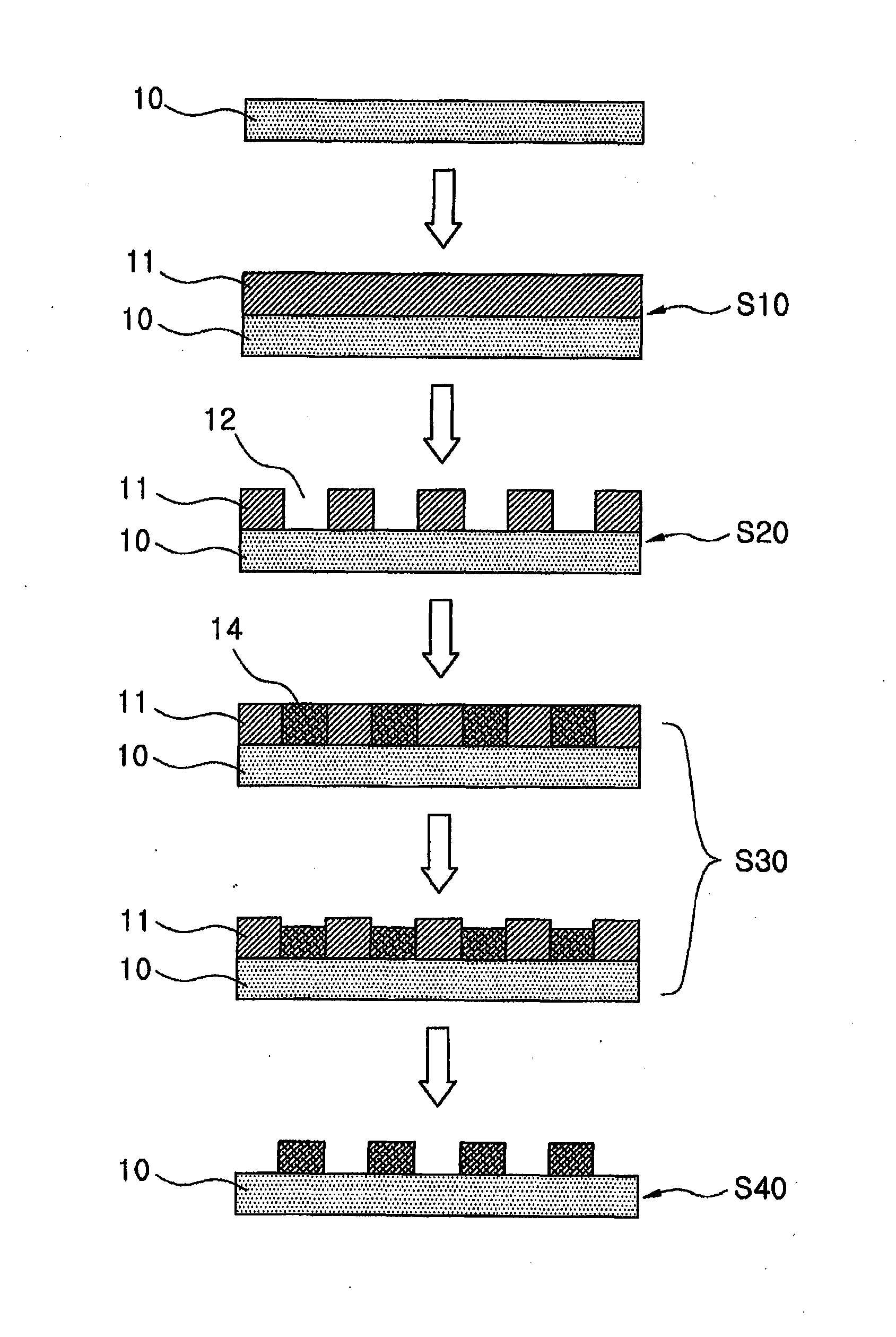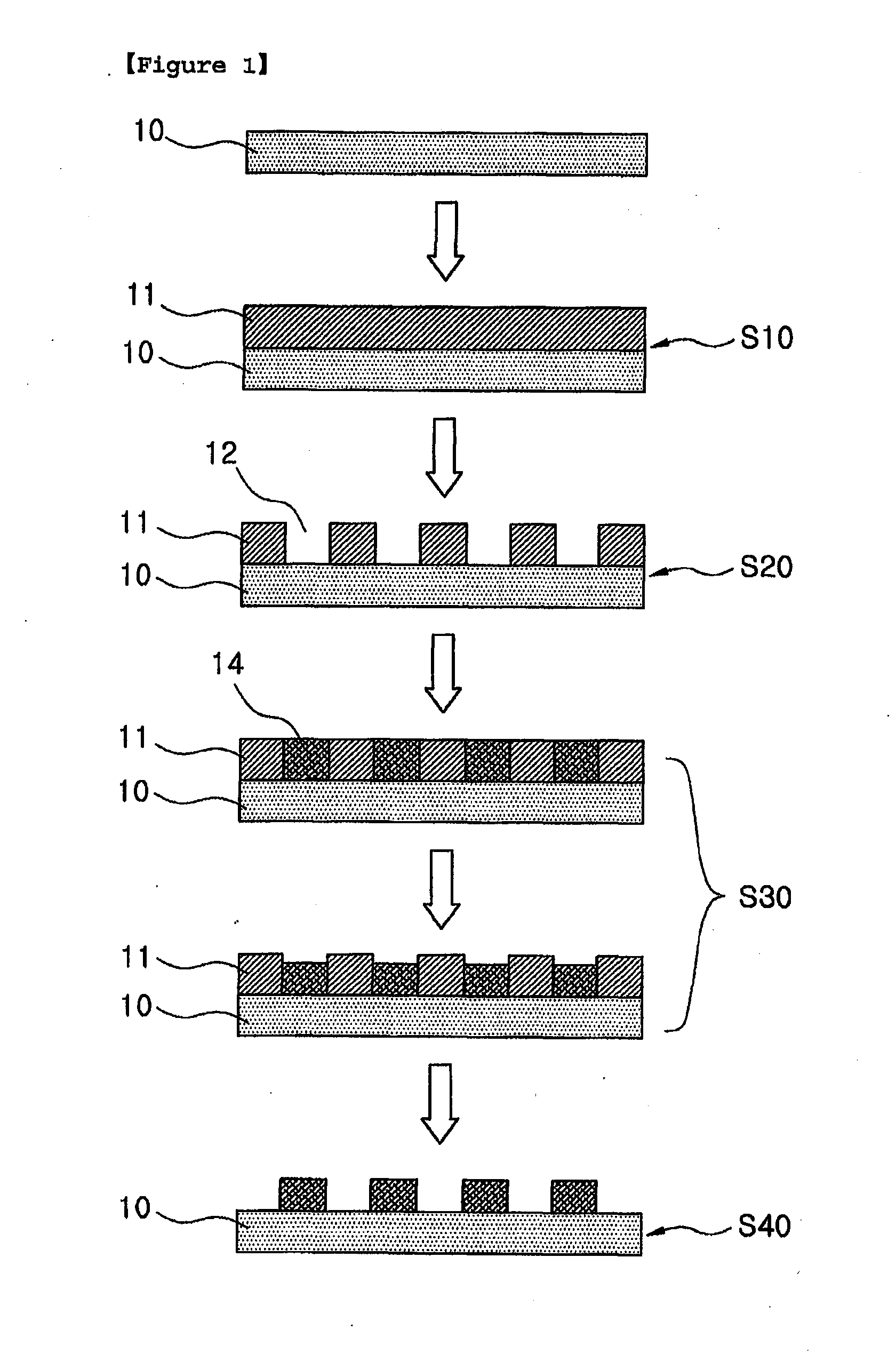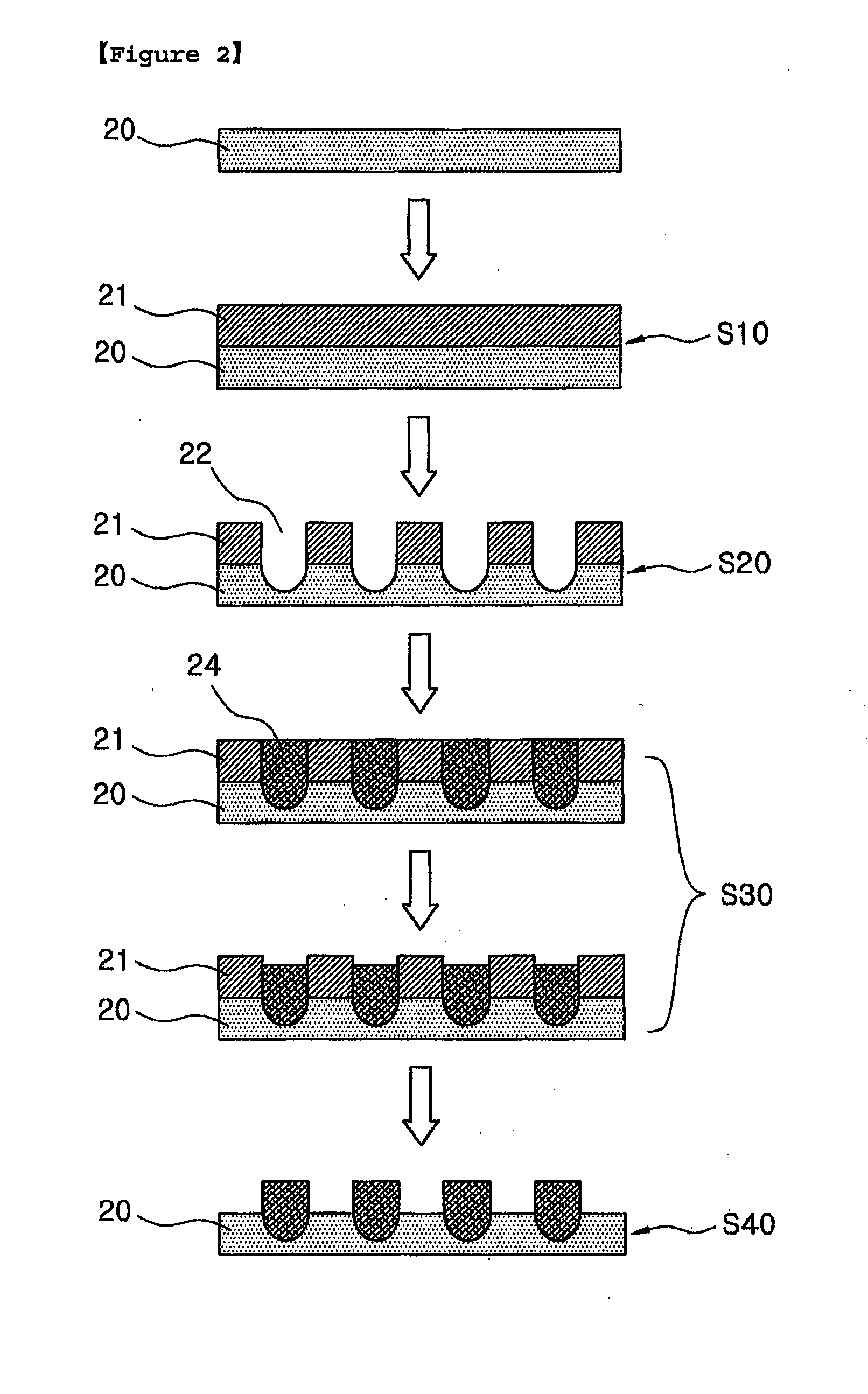Method for Fabricating Blackened Conductive Patterns
a technology of conductive patterns and blackened conductive layers, which is applied in the direction of resistive material coating, metallic material coating process, lithographic mask, etc., can solve the problems of high cost, large sized equipment required according to the etching, and complex fabrication process
- Summary
- Abstract
- Description
- Claims
- Application Information
AI Technical Summary
Benefits of technology
Problems solved by technology
Method used
Image
Examples
preparation example 1
Preparation of Silver Complex
[0081]Into a 250 ml Schlenk flask equipped with a stirrer, 34.89 g (129.8 mmol) of viscous liquid in which 2-ethylhexylammonium 2-ethylhexylcarbamate and butylammonium butylcarbamate are mixed at a molar ratio of 7:3 was put and 12.03 g (51.92 mmol) of silver oxide (made by Aldrich Chemical Co.) was added, followed by the reaction at room temperature for two hours with stirring. The reaction solution was initially a black slurry, but it turned transparent as complex was produced. Finally, 46.92 g of yellow, transparent aqueous silver complex was obtained and the silver complex had a viscosity of 7.8 pa·s and a silver content of 23.65 wt % (TGA analysis)
preparation example 2
Preparation of Silver Nanoparticles
[0082]Into a 100 ml beaker, 40.0 g of the silver complex prepared in Preparation Example 1 and 23.1 g of isopropyl alcohol were added and stirred at room temperature for ten minutes to prepare a first solution. Into another 100 ml beaker, 1.2 g of hydrazine monohydrate (made by Daejung Chemicals and Metals Co. Ltd.) and 50 g of isopropyl alcohol were added to prepare a second solution. The first solution and the second solution were injected into their inlets with a flow rate of 20 g / min, respectively. The solutions injected through the inlets were reacted at 5,000 rpm using a stirrer (made by Silverthorne, product name: L4RT-A) to obtain dark green slurry. The prepared slurry was filtered with a 1.2 um filter (made by Wattman company, product name: GF / C) by natural precipitation, followed by washing three times with isopropyl alcohol to obtain green nonopowder.
preparation example 3
Preparation of Conductive Ink
[0083]To 1.2 g of terpineol (made by TCI) as a solvent having a high boiling point, 40.0 g of the silver complex prepared by the same manner as described in Preparation Example 1 and 40 g of the green nanopowder prepared by the same manner as described in Preparation Example 2 were added and stirred for ten minutes, followed by adding 1.2 g of 1-amino-2-propanol (made by Aldrich Chemical Co.) and stirring again for tem minutes. After that, the resultant was passed through a three roll mill (made by Drais Manheim) three times to prepare a conductive ink composition having a silver content of 59.93 wt %.
PUM
| Property | Measurement | Unit |
|---|---|---|
| thickness | aaaaa | aaaaa |
| thickness | aaaaa | aaaaa |
| temperature | aaaaa | aaaaa |
Abstract
Description
Claims
Application Information
 Login to View More
Login to View More - R&D
- Intellectual Property
- Life Sciences
- Materials
- Tech Scout
- Unparalleled Data Quality
- Higher Quality Content
- 60% Fewer Hallucinations
Browse by: Latest US Patents, China's latest patents, Technical Efficacy Thesaurus, Application Domain, Technology Topic, Popular Technical Reports.
© 2025 PatSnap. All rights reserved.Legal|Privacy policy|Modern Slavery Act Transparency Statement|Sitemap|About US| Contact US: help@patsnap.com



